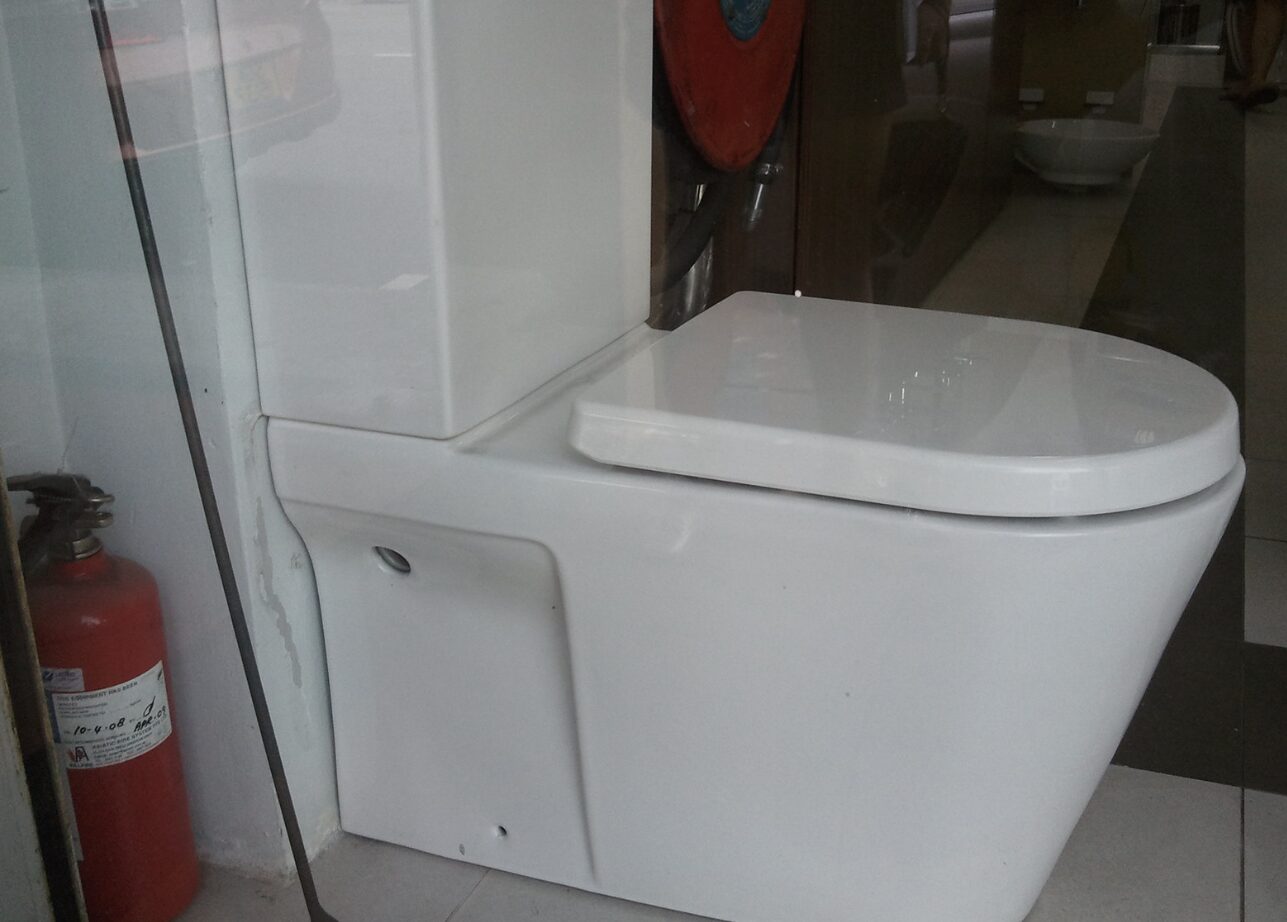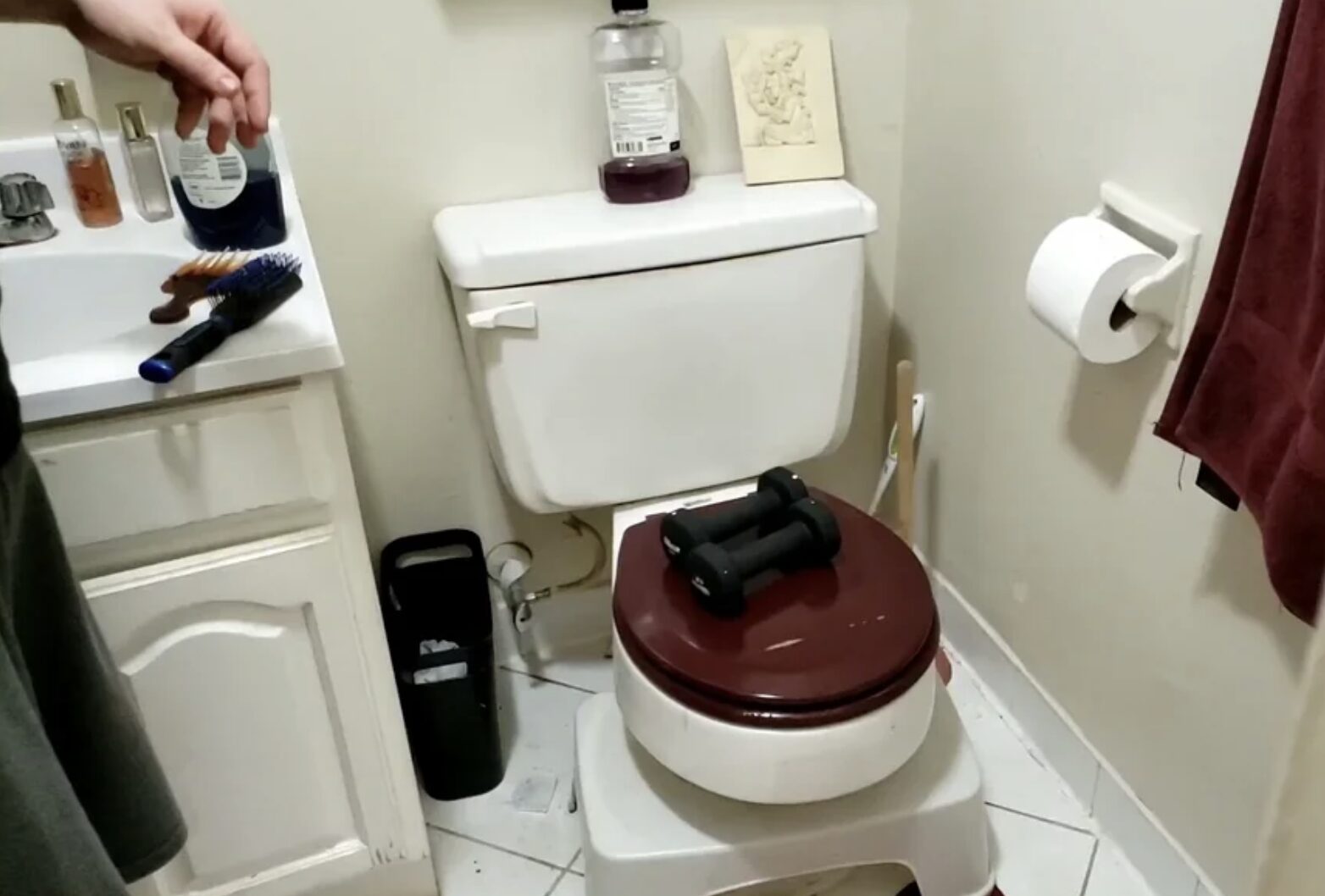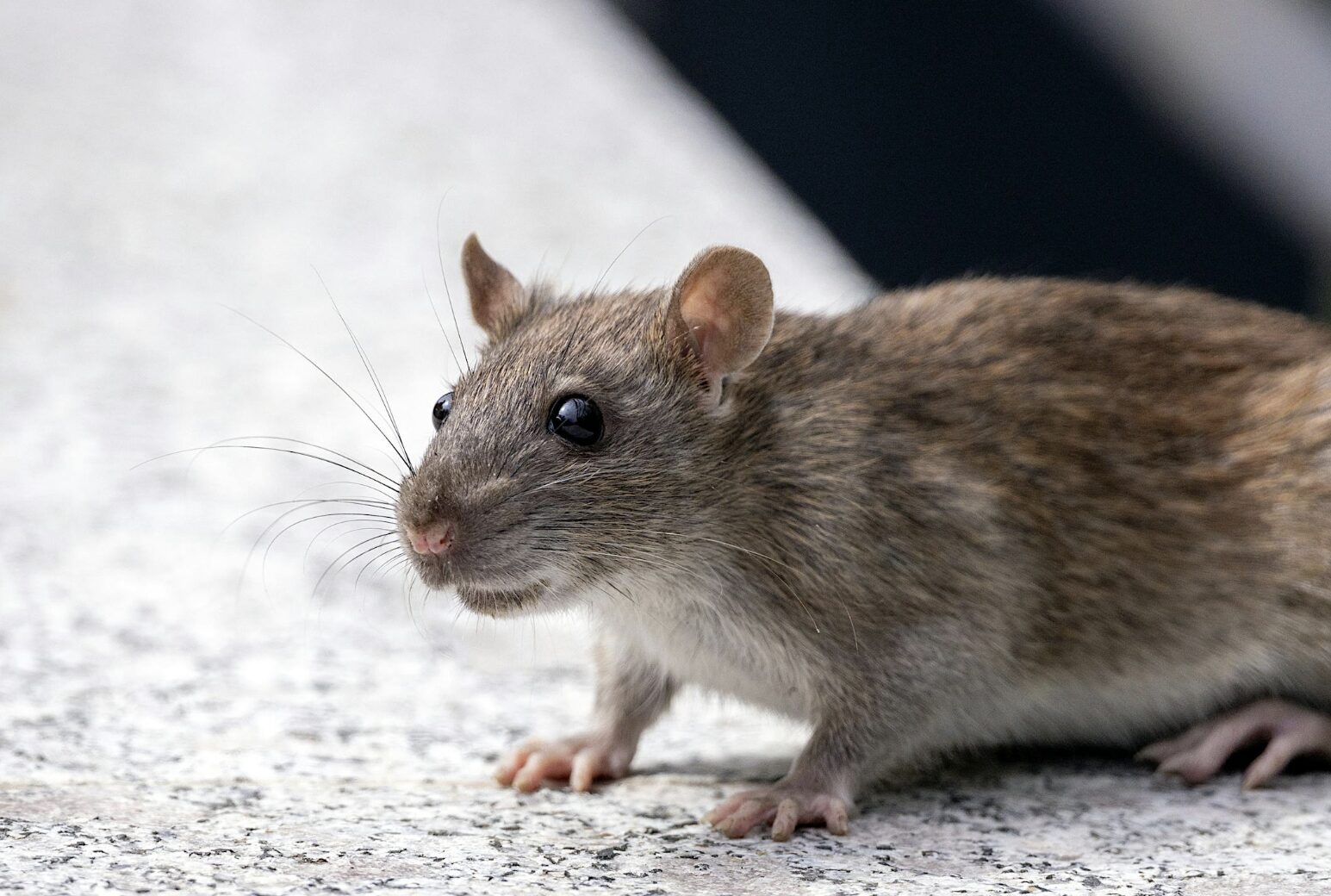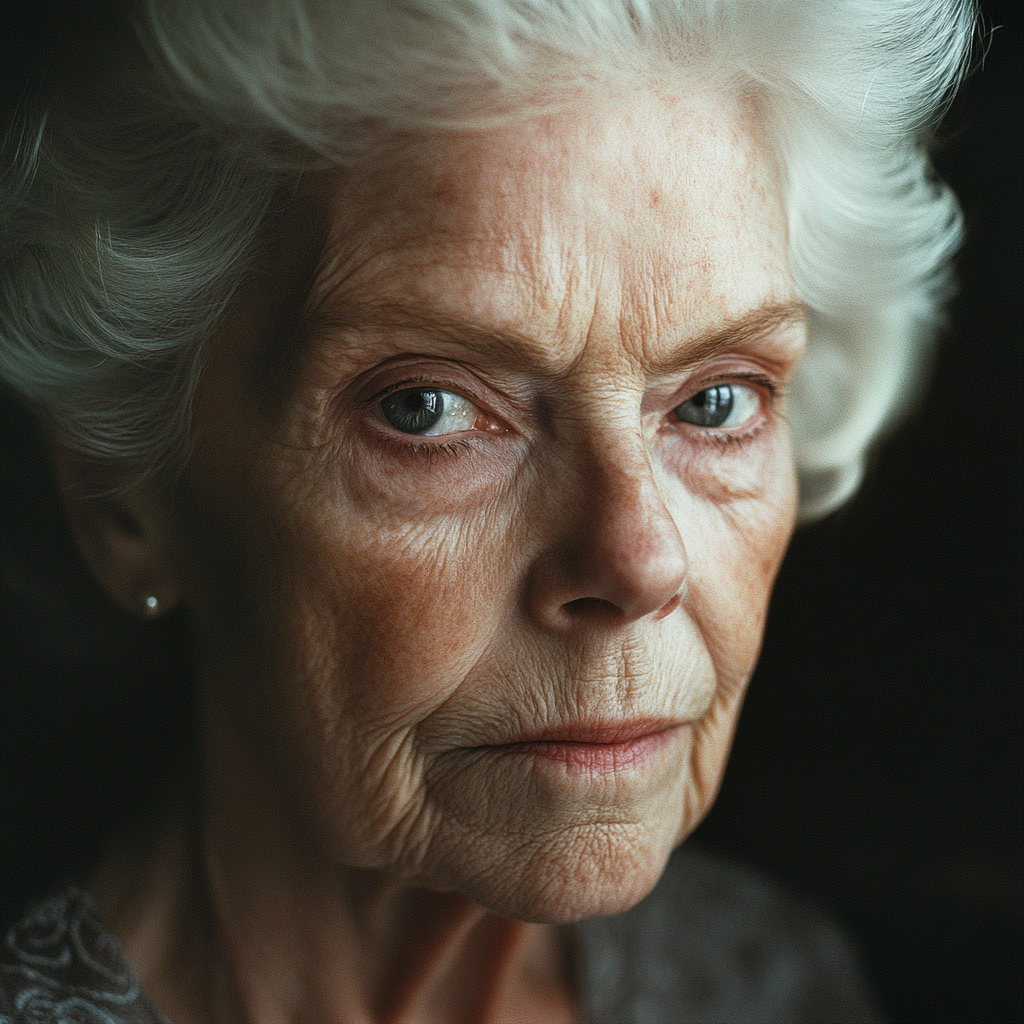
Nightmare! Total nightmare! I really don’t know how else to think or write about this. Rats in the toilet? Just the thought sends shivers down my spine, and honestly, I don’t even want to entertain the idea, let alone experience this scenario firsthand. After hearing a few urban legends, I was curious (and terrified), so I started asking around. My friends were just as skeptical and freaked out. “No way that can happen,” they laughed. But guess what? It’s not a myth.
Rats can, indeed, make their grand entrance right into your toilet, and just knowing this fact was enough for me to dive deep into a frenzy of worrying and researching. Like, what in the world would I do if I encountered a rat in my toilet? The first thing that pops into my mind is to run. But realistically, so would the rat—potentially after me! Clearly, I needed better solutions. So here’s the lowdown on what I discovered…

First Things First: Can Rats Really Swim Up Our Toilets?
Absolutely, yes. Rats in the toilet aren’t just some horror movie fiction; they’re a startling reality. These creatures are surprisingly adept swimmers. They can hold their breath for up to three minutes and tread water for as long as three days. They can even squeeze into spaces as tiny as a quarter. The usual route for these sewer-loving swimmers begins in your home’s main sewer line. They shimmy up, navigating through the narrow urban waterways, and presto, they pop up in your toilet like a grotesque surprise in a jack-in-the-box.

How Do They Do It?
Well, it turns out rats are attracted to the scents of food and waste that linger in our sewer lines. They explore these lines by squeezing through the smallest of cracks and climbing inside the vent stacks that lead to the roofs of buildings. Once they find a drainpipe that leads downward toward a toilet, it’s merely a matter of paddling upwards and making a grand entrance right into the porcelain throne.
Encounter of the Rodent Kind
Imagine this: it’s the dead of night, you’re groggily making your way to the bathroom, and as you flip on the light, there it is—a rat, casually lounging in your toilet bowl. What do you do? Well, after my initial instinct to sell the house and move to a rat-free island subsides, here’s the more rational action plan I put together after consulting with every expert source I could find:
Keep Your Cool: Panicking will likely scare the rat, potentially driving it to seek refuge in even less accessible parts of your home.
Contain the Situation: Quickly close the toilet lid to prevent its escape and place something heavy on top. Rats can be surprisingly strong, and the last thing you want is a chase scene in your bathroom.
Dial for Help: This is definitely a situation for the professionals. Pest control can manage the situation with the right equipment and safety protocols.
Handling a Deceased Visitor: If the rat isn’t alive, wear gloves to remove it from the bowl, place it in a sealed bag, and dispose of it properly. Don’t forget to disinfect every surface within a mile radius (okay, maybe just the bathroom).

Flushing is a No-Go: Whether it’s dead or alive, flushing the rat is a bad idea. It’s inhumane if it’s living, and could cause significant plumbing issues either way.
Prevent Future Uninvited Guests: After handling the immediate crisis, consider installing a non-return valve in your sewer system. This gadget allows waste to exit but prevents rodents from entering.
Regular Checks: Keep an eye on your plumbing to ensure there are no easy entry points for future intruders. Make sure all pipes and vents are secure and in good repair.

As for me, since learning all this, I’ve been extra vigilant. Maybe I’m checking the toilet a bit too obsessively before each use, but hey, can you blame me? And about that idea of moving out? Well, let’s just say my browsing history has seen a significant increase in real estate listings.
So, do you believe it now? —rats in your toilet aren’t just an urban myth but a potential reality. But with the right knowledge and precautions, you can prevent these terrifying scenarios and tackle them with confidence if they do arise. Stay alert, stay informed, and maybe keep a heavy book near the bathroom, just in case.
I Was Told to Stay Away from the Old Lady on the Third Floor Until I Discovered She Knew a Secret About My Past — Story of the Day
When I took a nanny job at the Harrison estate, I thought it was my chance to start over. But the forbidden third floor and whispers about my mother’s past made me question everything I thought I knew.
When my mother passed away, my world fell apart. She wasn’t just my mom; she was my anchor. Without her, I was adrift in a storm of grief and bills that piled up faster than I could handle.
I spent countless nights scrolling through job postings. “Experience required.” “Degree preferred.” Each rejection chipped away at my hope.

For illustration purposes only | Source: Midjourney
“Come on, Sarah,” I whispered to myself.
Then, one day, a thick envelope arrived.
The Harrisons?
I’d never heard of them, but the letter inside offered a job as a nanny for their eight-year-old son, Lucas. It felt like a miracle.

For illustration purposes only | Source: Midjourney
***
When I arrived at the Harrison estate, its grandeur was overwhelming—perfect gardens, towering doors, everything so pristine it felt unreal.
“You must be Sarah,” a sharp voice broke my thoughts.
I turned to see a stunning woman descending the steps.
“I’m Veronica,” she said curtly. “Come in.”

For illustration purposes only | Source: Midjourney
The house’s gleaming marble floors and sparkling chandeliers gave it the feel of a museum rather than a home.
“This way,” Veronica said briskly.
Lucas, my charge, stood by the staircase, clutching a book.
“Hi,” he mumbled, barely glancing up when prompted.
“Lucas isn’t much for talking,” Veronica said, brushing him off.

For illustration purposes only | Source: Midjourney
She continued outlining the rules.
“And one more thing,” she said, stopping abruptly. “The third floor is off-limits. That’s where the grandmother lives. She values her privacy.”
I nodded, but her tone made me uneasy.
At dinner, I met Richard, Lucas’s father, a kind-eyed man who looked older than his years.
“Lucas has mentioned you,” he said warmly.

For illustration purposes only | Source: Midjourney
“Has he?” I asked, glancing at Lucas as he pushed broccoli around his plate.
“He’s observant,” Richard said with a small smile.
Then there was Oliver, Richard’s eldest son, “just visiting for a while.”
That night, as I settled into my room, I couldn’t shake the feeling that the house held secrets that were tied to the forbidden third floor.

For illustration purposes only | Source: Midjourney
***
While tidying Lucas’s room one afternoon, I stumbled upon a dusty old photo album tucked away at the back of his closet. Its leather cover was cracked and worn as if it had been forgotten for years.
My curiosity got the better of me, and I carefully opened it, flipping through the pages.
The photographs were full of happy moments: Richard as a young man, his arm around a lovely woman who must be his first wife. Beside them was little Oliver grinning at the camera.
My lips curved into a small smile, but as I turned the next page, my heart stopped.
This is… my mother!

For illustration purposes only | Source: Midjourney
There she was, smiling brightly, standing beside Richard, holding baby Oliver in her arms.
What is she doing in these photos?
I remembered how she had once mentioned working as a nanny for a wealthy family, but she had never given me any details.
Why? Why did she leave? Why didn’t she tell me?
I stared at the photo, unable to look away.

For illustration purposes only | Source: Pexels
That evening, I wandered the hallways of the Harrison house, thinking. As I passed the living room, sharp voices caught my attention. I slowed my steps, careful not to make a sound.
“Your mother keeps bringing up Kristy and her child,” Veronica hissed, her tone edged with frustration. “I’m sick of hearing about it. How much longer are you going to let her go on with these stories? Kristy existed, didn’t she?”

For illustration purposes only | Source: Midjourney
Richard’s voice was heavy. “She’s old, Veronica. She doesn’t know what she’s saying half the time. Kristy was just a nanny for Oliver. My mother is mixing up memories with things that never happened.”
I froze, gripping the banister. Kristy. That was my mother’s name. They were talking about her.
My breath caught as realization hit. The grandmother knew something about my mother and this family.
Is she trying to tell them something important?
I needed answers. And I knew exactly where to start: the third floor.

For illustration purposes only | Source: Pexels
***
The next evening, I waited for my chance. Richard and Veronica left for a charity event, and Oliver was buried in a book in the study. I tucked Lucas into bed, leaving the baby monitor on the nightstand, and quietly made my way to the third floor.
My heart thudded in my chest as I reached the locked door to the grandmother’s room. I’d noticed earlier that the kitchen keyring held a small, unmarked key. Slipping back downstairs, I retrieved it, hoping it would fit. When I returned, I slid the key into the lock. It turned with a soft click.

For illustration purposes only | Source: Pexels
The room was dim, lit only by a lamp on a small table. The scent of lavender lingered in the air. An ornate rug lay beneath a chair where the grandmother sat by the window, a photograph trembling in her wrinkled hands. She didn’t look up until I stepped inside.
Her gaze landed on me, and her eyes filled with tears.
“You must be Sarah. You look so much like Kristy.”
“You… you knew my mother?” I stammered, stepping closer.

For illustration purposes only | Source: Midjourney
She nodded, motioning for me to sit on the chair across from her.
“I’ve been waiting for this moment,” she said, clutching the photo tightly. “Your mother worked here many years ago. She was Oliver’s nanny, but she was much more than that. She was everything to Richard.”
“What do you mean?”

For illustration purposes only | Source: Midjourney
Her voice dropped to a whisper, but it was filled with emotion.
“Your mother and Richard fell in love. It was a big secret. They had to hide it. Richard was already married, and my husband, your grandfather, demanded they keep up appearances for the family’s reputation. When Kristy found out she was pregnant with you, she left. She didn’t want to destroy the family. We’d been mailing for years. That’s why I have your photos.”

For illustration purposes only | Source: Midjourney
The room spun around me. I shook my head, trying to process her words.
“Is Richard my father?”
Tears streamed down her face as she nodded.
“Yes, my dear. You are his daughter. I’ve tried to tell him, but he won’t listen. He thinks I’m just a senile old woman.”
Her voice cracked. “And Veronica, his new wife… She’s kept me isolated, trying to silence me.”

For illustration purposes only | Source: Midjourney
I couldn’t speak. The weight of her words crushed me. She reached for my hand.
“That was my invitation in your mail. You have your mother’s spirit. And I want you to be part of our family. Sooner or later.”
“No one will believe me,” I said quietly. “They’ll think I’m here to take something or cause trouble.”
The grandmother’s expression softened.

For illustration purposes only | Source: Midjourney
“In time, they will. Your mother, Kristy, was the only one who truly loved Richard for who he was, not for what he had. He knew it then, and he’ll feel it now. He will accept you because you’re part of her—the woman he truly loved.”
“I should go,” I said, hearing faint rustling through the baby monitor in my pocket. “Lucas needs me.”
“Go on, dear. We’ll talk again when the time is right.”
I slipped out, locking the door behind me. The hallway felt heavy as I descended the stairs, thoughts racing.

For illustration purposes only | Source: Midjourney
Reaching Lucas’s room, I found him sound asleep, his small hand clutching his blanket. I exhaled in relief.
But, at that moment, I didn’t notice the faint sound of a door closing in my room.
***
When I entered my room, my breath caught! Oliver was sitting on the edge of my bed.
“You spoke to her, didn’t you?” he asked.
I nodded, unsure of how much to admit. “I didn’t mean to, but…”
He raised a hand, stopping me.

For illustration purposes only | Source: Midjourney
“It’s fine. I overheard everything.” His face softened, the guarded expression fading. “I always knew something didn’t add up about that time. Now it makes sense.”
His understanding gave me courage, and we made a plan together. That evening, Oliver convinced Richard to call a family dinner. Even Veronica, though suspicious, had no idea what was coming.
As everyone gathered, including the grandmother, my heart pounded. Taking a deep breath, I stood up.

For illustration purposes only | Source: Midjourney
“I have something to say. I didn’t come here with a plan to disrupt your family, but now that I know the truth, I can’t keep quiet.”
All eyes were on me as I told my story: how my mother had worked here, how she’d loved Richard, and the secret she carried when she left.
“I’m not here to take anything from you,” I added, looking directly at Richard. “But your mother deserves more respect than she’s been given. She’s far more capable than you think.”

For illustration purposes only | Source: Midjourney
Veronica’s face reddened, but before she could speak, Richard raised a hand.
“Enough,” he said firmly.
The room fell into a heavy silence. Finally, I cleared my throat, breaking the quiet.
“I think it’s better if I leave. I didn’t come here to stay, and now you finally have a chance to make things right as a family.”
My gaze moved from Richard to the grandmother, and then to Oliver. “This is your time to fix what’s broken.”
Richard’s lips parted as if to object, but he said nothing. He only nodded, his shoulders slumping slightly.

For illustration purposes only | Source: Midjourney
***
The next morning, I packed my bags. At the door, Oliver handed me an envelope with a salary. “You’ll always have a brother in me. Don’t be a stranger.”
A month later, I was invited back for my grandmother’s birthday. Lucas and Oliver welcomed me warmly, and Richard approached.

For illustration purposes only | Source: Midjourney
“I ended things with Veronica. I want to make up for lost time.”
I stayed, and slowly, we became what we were meant to be. Grandmother laughed with Lucas in the garden, Oliver and I raced through morning runs, and my father and I biked along sunlit paths, sharing stories of my mother.
Together, we began to heal. At last, I had a family.

For illustration purposes only | Source: Midjourney
Tell us what you think about this story, and share it with your friends. It might inspire them and brighten their day.



Leave a Reply